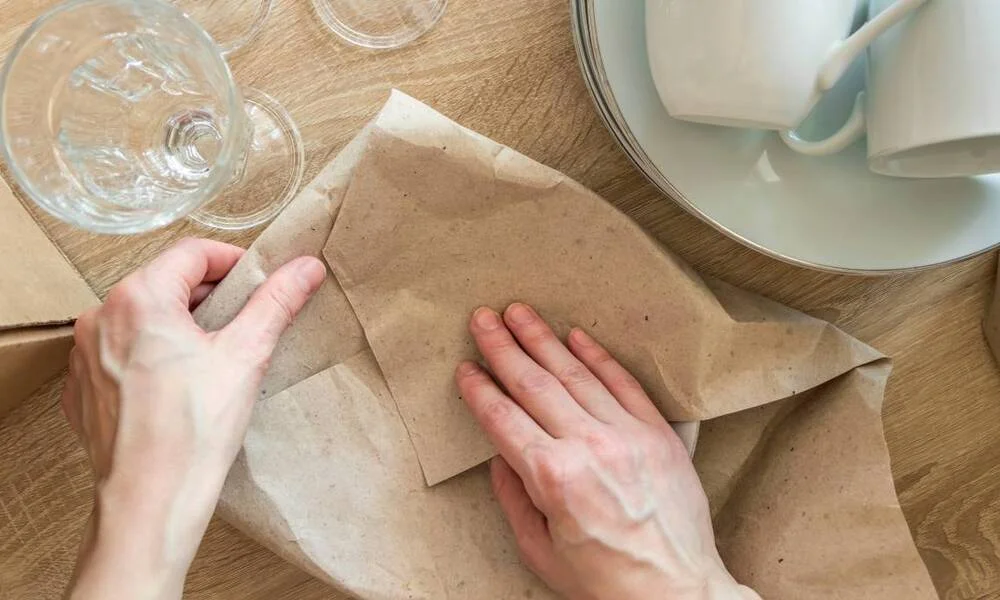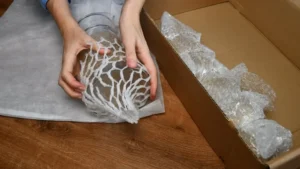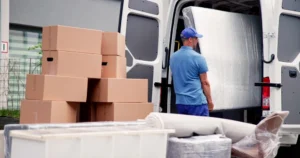How to pack kitchen for moving starts with proper planning and the right approach, since the kitchen is often the most challenging room to prepare for relocation. Unlike other spaces in your home, the kitchen is filled with fragile glassware, delicate dishes, bulky cookware, and heavy appliances that all require special care. To pack kitchen for moving safely, every item whether it’s a set of wine glasses, ceramic plates, or large pots and pans must be wrapped and secured properly to prevent damage. Using the right supplies such as sturdy boxes, bubble wrap, packing paper, tape, and markers is essential when packing kitchen for moving. With careful organization and the correct techniques, you can reduce stress and ensure all your kitchen items arrive safely at your new home.
Things You’ll Need for Packing Your Kitchen
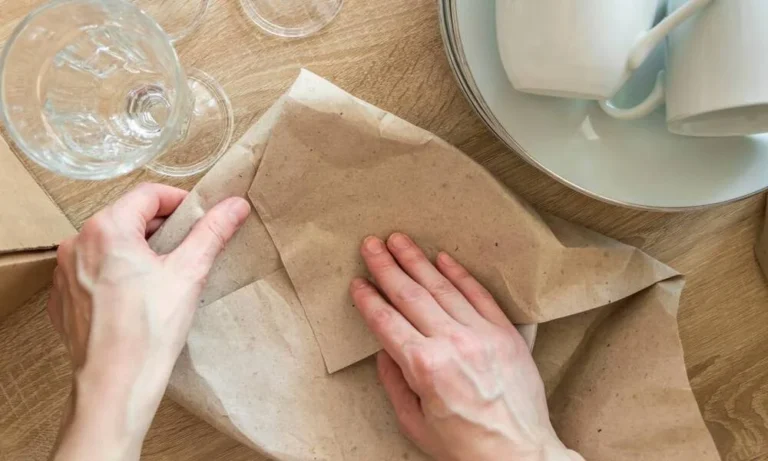
If you have the right packing supplies and stay organized, it becomes much easier to pack kitchen for moving without feeling overwhelmed. Preparing these materials ahead of time not only helps protect fragile items like dishes, glassware, and cookware but also keeps everything organized during the relocation process. By planning in advance, you can pack kitchen for moving efficiently and reduce the stress that often comes with moving day.
Packing Supplies
Bubble wrap, packing paper, and dish packs: These materials are essential for protecting fragile kitchen items like glassware, plates, and mugs. You’ll get additional cushions for higher protection to minimize the likelihood of breakage in transit.
Cardboard boxes in a variety of sizes: Small boxes are ideal for utensils and lightweight items, while medium boxes are more suitable for heavy cookware like pots and pans. Just be sure not to overpack bigger boxes to reduce the risk of it breaking entirely.
Packing tape, labels, and markers: The packing tape is strong and durable to seal boxes securely, the labels and markers will help you see what is in each box quickly and make moving and unpacking much easier.
Tools and organizational items
Basic tools for your kitchen appliances: If you need to disconnect or disassemble large kitchen appliances, have screws or other tools handy.
Ziplock baggies for little pieces: Use labeled Ziplock baggies for small pieces like screws or other tiny pieces from appliances and keep them together, so they are not lost!
Plastic bins for items like utensils or gadgets: These work well for organizing everything in smaller bins, such as cutlery, measuring cups, or kitchen tools. Plus, it will keep them together, so they are easy to find later.
With a few items and a little prep, you will be able to pack your kitchen efficiently while doing your best to keep each item safe during the transfer process.
How to Pack Your Kitchen for Moving in 5 Simple Steps

Planning a move? One of the most challenging parts is figuring out how to pack kitchen items properly. From fragile glassware and delicate dishes to heavy pots, pans, and everyday utensils, it can feel overwhelming. However, with the right strategy and some organization, packing kitchen for moving becomes much smoother and more efficient. To make things easier, here’s a simple 5-step guide to help you pack your kitchen safely and stress-free.
Step 1: Declutter prior to packing
Before you begin packing, you can go through your cabinets, your pantry, and your drawers to decide if you want everything you have.
- Toss any expired canned or packaged food, broken utensils, or chipped dishes.
- Donate anything that is gently used but you can do without, especially appliances and cookware.
- Sell any pricey equipment you don’ use or only use occasionally.
- Throw out anything that is damaged or unusable.
Decluttering before packing will save you time in the long run, packing costs will be reduced, and unpacking will be less tedious in your new home.
Step 2: Start Packing Non-Essential Items First
You have completed the down-sizing or decluttering phase, so let’s start wrapping items that you do not use on a daily basis.
- Seasonal dishes, serving trays, and special gadgets should be packed first.
- Wrap each item in bubble wrap or packing paper to avoid breakage.
- Use dish boxes with dividers for breakable pieces.
- Each box should indicate what is inside and where it should be placed in your new place.
By tackling non-essentials first, you keep your kitchen functional until moving day.
Step 3: Handle Cookware with Care
Pots, pans, and other heavy cookware require extra attention.
- Wrap each piece in bubble wrap, packing paper, or kitchen towels.
- Nest similar-sized pots with padding between.
- Pack cookware into strong boxes and clearly label as “heavy”.
This method prevents scratches, dents, and accidents while carrying boxes.
Step 4: Protect the Plates, Glasses, and Mugs
Fragile kitchenware needs careful packing to avoid chips and cracks.
- Wrap plates separately and pack them upright (like records) in the box.
- Use dishboxes with cardboard dividers if you have them, for added protection.
- Pack the glasses and mugs upright, making sure you pad around the outside of the glasses and mugs.
- Fill any remaining gaps with crumpled paper or foam to ensure that items do not shift.
Step 5: Organize Utensils, Gadgets, and Small Appliances
Finally, pack the smaller everyday essentials.
- Group silverware and utensils in zip-top bags or small containers.
- Remove batteries from gadgets like blenders or coffee makers.
- Use original boxes for appliances when possible; if not, wrap them in towels or bubble wrap and pack them in sturdy boxes.
- Keep frequently used items in a separate “essentials box” so you can easily access them right after the move.
How to Pack Small Kitchen Appliances for Moving
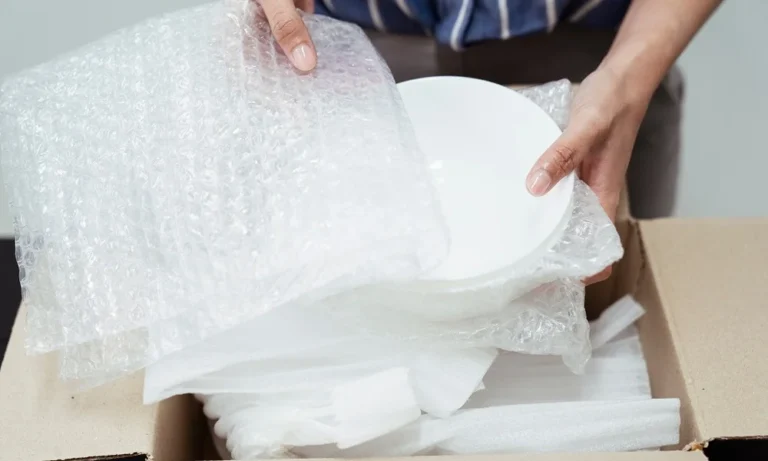
Properly packing small kitchen appliances will ensure they arrive at your new home undamaged and ready to go. While small appliances are not as bulky as refrigerators or stoves, they are still fragile and often expensive, so good packing is essential. Use this step-by-step packing guide to safely pack your appliances so you can enjoy a trouble-free move.
Step 1 – Prepare Appliances Before Packing
Getting appliances ready before packing them away is an important first step to help protect appliances during travel and make it easier to set up once you have moved in.
- Unplug and clean thoroughly. Always remember to unplug when finished with appliances such as coffee makers, microwaves, and toasters. Make sure to wipe clean each appliance to remove food particles, crumbs, and grease. This step can aid in preventing odors, dirt, or stains to other belongings.
- Remove loose or fragile parts. Detach any loose or fragile appliance parts such as blender blades, toaster crumb trays, or microwave turntables. Adding a layer of bubble wrap to each item is a step to consider, and you can also use labeled zip-top bags to keep them safe and organized.
Step 2: Use Original Boxes (If You Have Them)
If you’ve still got the original packaging for your small appliance, the best way to pack it is in that box.
Why it’s ideal: The packaging the appliance came in was specifically designed to fit that appliance and usually comes with custom padding or foam inserts that holds the appliance in place and protects it well.
But if you no longer have the box:
- Wrap the appliance in several layers of bubble wrap for padding.
- As an alternative to bubble wrap, you can use towels or soft blankets as protective layers.
If the original box is no longer available, select a durable box that is close in dimensions to the appliance. Then, fill in any remaining space in the box to ensure the item does not shift during travel by inserting packing paper, newspaper, or foam peanuts.
Step 3: Label and Secure Properly
Once packed, securing and labeling your appliances correctly ensures they’re handled with care and easy to unpack later.
- Clear labeling: Mark each box with “Fragile” and “This Side Up” to alert movers. You can also note the specific appliance inside (e.g., Coffee Maker), which will make unpacking more organized.
- Safe packing tips:
- Pack appliances snugly with little room for movement.
- Seal each box tightly with quality packing tape.
- Place heavier items at the bottom and lighter ones on top to avoid damage from weight.
Final Thoughts
Packing your kitchen for a move can be a daunting task, but with the right approach, it can be made much easier. By following the right steps sorting and decluttering, packing non-essentials first, and using proper packing materials for fragile items like plates, glassware, and small appliances you can ensure everything stays safe and organized throughout the move. If you’re looking for a hassle-free moving experience and need help packing your kitchen or entire home, Chamomile Go is here to assist. Our expert team provides reliable moving and packing services to make your transition seamless. If you want moving and packing services, don’t hesitate to contact us at +1 310-895-3517. Let us handle the hard work while you focus on settling into your new space!
FAQs
What Is The Best Way To Pack Fragile Kitchen Items Like Glassware And Plates?
To pack fragile kitchen items like glassware and plates, wrap each item individually with bubble wrap or packing paper. Use dividers in dish packs for extra protection. Stack plates carefully and place glasses standing up in a well-padded box. Always ensure there is enough cushioning between items to prevent any shifting during transit.
Should I Pack My Kitchen Appliances In Their Original Boxes?
If you have the original boxes for your kitchen appliances, it’s highly recommended to use them. These boxes are designed to fit the appliances perfectly, offering better protection. If you don’t have the original boxes, wrap appliances in bubble wrap or towels, and place them in sturdy boxes with extra padding.
How Do I Pack Pots, Pans, And Cookware Safely For Moving?
To pack pots and pans, wrap each item in kitchen towels, bubble wrap, or packing paper. Group similar-sized cookware together to prevent them from moving around in the box. Label the box for easy identification and make sure it’s packed securely to avoid any shifting or damage during transit.
What Should I Do With Small Parts Or Detachable Pieces From Kitchen Appliances?
Remove any detachable parts from kitchen appliances, such as blender blades, toaster crumb trays, or microwave turntables. Place these small parts in ziplock bags or separate boxes, and clearly label them to ensure you don’t lose any pieces.
How Do I Organize And Pack My Utensils And Gadgets For A Move?
For utensils, pack them in a small bin or box and group them by type (e.g., knives, forks, spoons). Make sure they are secured to prevent movement. For small kitchen gadgets, wrap each item in bubble wrap or towels, and pack them in a sturdy box. If you have the original packaging for any gadgets, use it for added protection.
